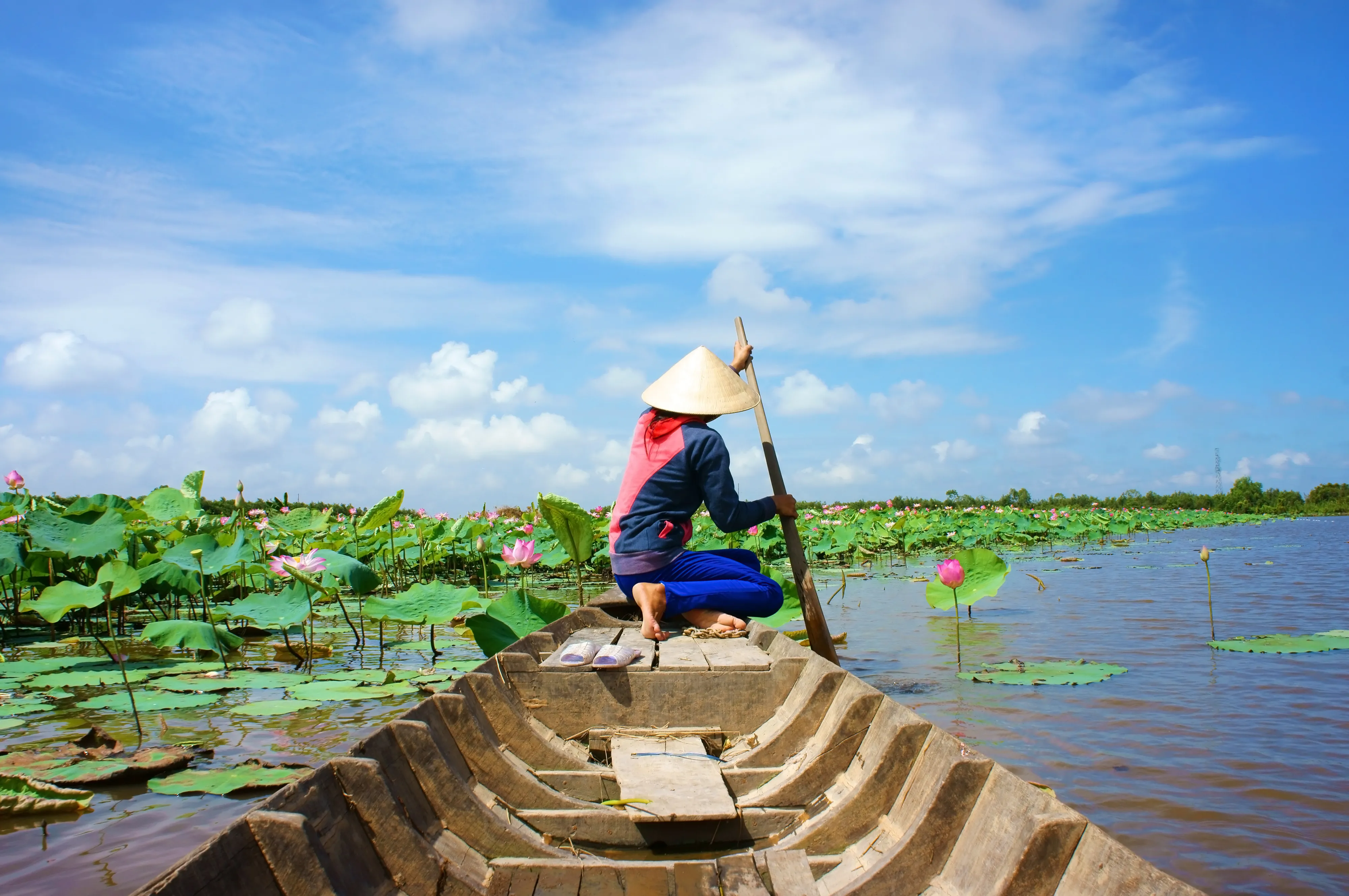
From the heights of the Himalayas to the shores of the China Sea, the Mekong travels nearly 4500 km. It is all of Indochina that the Mekong irrigates and wherever it flows, it fascinates people and shapes their lives.
We suggest you discover this large and generous "water snake", opting for a cruise from Saigon to Vietnam, a city still strongly influenced by the presence of French colonials, to the Great Lake Tonle Sap at Cambodia and the remains of Angkor, passing by the mythical Halong Bay ...
This Meditating Mekong cruise will allow you to live with the rhythm of the Mekong River aboard a ship that combines history, charm and comfort, while discovering the natural and cultural riches of Vietnam and Cambodia.
The CroisiEurope Cruises allow you to tailor your trip according to your desires. Here are some examples:
Do not hesitate to consult all our cruise offers on the Mekong to find the trip that is right for you.


It is only roughly 15 years ago that cruising the Mekong, Asia’s most legendary river, was made possible, sailing on the calm and captivating waters from Cambodia to Vietnam.
This 4,900 km long snake-like winding river flows through six countries and represents a lot more than a collection of pictures taken as holiday souvenirs by a far-flung destination travel lover.
Going back to where the river originates from, the Mekong begins high up in the Himalayas, 5,224 meters above sea level, in the province of Qinghai and flows through several countries: China, where it is referred to as the ‘turbulent river’, and through the ‘golden triangle’ of Burma, Laos and Thailand. It then flows through Cambodia and feeds the Tonlé Sap, the biggest freshwater lake in Asia. Finally, it flows peacefully through Vietnam ending into the South China Sea.
The Mekong is made up of many tributaries all along its way. A journey on the river is a window into a new world, letting you sample the daily life of almost 70 million people who reside on the banks.
It flows along the border between Laos and Thailand, then flows through Cambodia where the population, mostly of buddist faith, refer to it as the “great river”.
It is also in Cambodia, where the Mekong supplies the biggest lake in South-East Asia called “Tonlé Sap”, that the phenomenon of “reverse flow” takes place: the Tonlé Sap river reverses the direction of its flow, in response to weather events. The Tonlé Sap river connects the Lake of the same name and the Mekong and is as tidal estuaries, with flow reversal according to seasons acting as a protection against flooding during the monsoon. During the high water season, the lake’s capacity can go up to 16,000 km2, 6 times more than during the low water season. Tonlé Sap’s biodiversity, also referred to as “flooded forest”, is recognised as a UNESCO biosphere reserve since 1997. It is one of the most productive fishing areas in the world.


Cambodia and Vietnam are two countries with two very different atmospheres. Cambodia is slow paced and all about taking your time. Phnom Penh, the capital city has a nostalgic vibe reminiscent of the country’s colonial area.
Vietnam demonstrates its desire to develop economically, and is characterised by its restlessness, especially Ho-Chi-Minh City. The megalopole has many traditional boisterous and redolent markets get on with their day-to-day trade, next to the affluent quarters of the city and their luxury shops and hotels.
In the backdrop of this impressive trip, the tumultuous, at times painful and ridden with conflict, the history of both countries takes centre stage. Cambodia was only liberated from the Khmer rouge in 1994 after two decades of radical communist dictatorship. They were removed from power in 1979 following a vietnamese invasion in Cambodia, but new guerillas took place until the end of the 1990s.
Roughly two million Cambodians are estimated to have lost their lives under this regime, which is responsible for mass crimes. In Phnom Penh, the S21 death camp set up in a former college from 1975 until 1979 under Pol Pot’s regime can be visited and is a reminder of what close to 15 000 prisoners endured. Vietnam had a close shave too, ruined and devastated after 30 years of fight for independence.
Cambodia and Vietnam went through a prosperous phrase during French colonisation of Indochina. Numerous monuments and public buildings remain, mainly so in Ho-Chi-Minh City built by the French in 1859, being a small fishing port at the time.
The development of tourism gave a new breath to both countries. It is truly a magical experience that awaits you on a mekong cruise.
